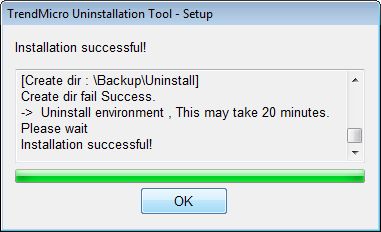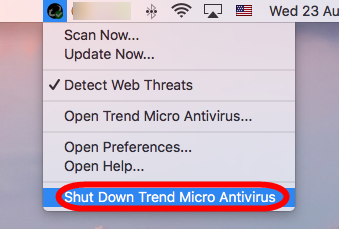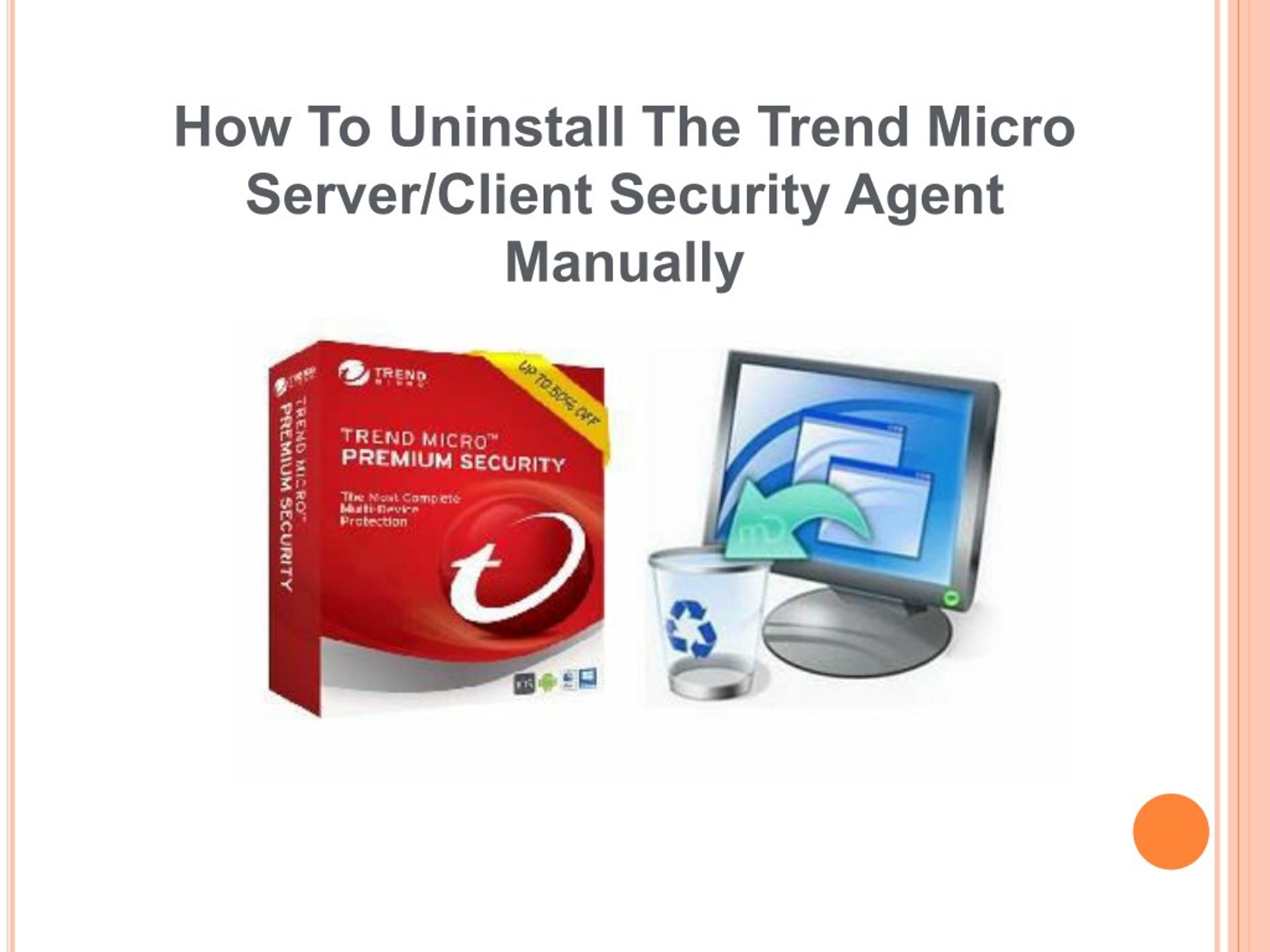

- Removing trend micro security agent install#
- Removing trend micro security agent software#
- Removing trend micro security agent zip#
Perform the query " SELECT * from Antivirusproduct".ĥ. Launch wbemtest from an administrative command prompt and connect to the root\Securit圜enter2 WMI namespace.Ĥ.

Note the GUIDs of the instances of the product that you wish to remove.ģ. Use NirsoftSimpleWMIViewer to open the root\Securit圜enter2 WMI namespace and perform a WMI Class Query on AntiVirus Product.Ģ.
Removing trend micro security agent install#
The WFBS client application appeared to uninstall from the computers, but when attempting to install the new product, I received a message from the new product's installer that another antivirus product was already installed on the system, and so the new package's antivirus features would not be installed.Īfter several days of searching, I finally found that I needed to manually identify and delete WFBS entries from the Windows Management Instrumentation (WMI) database.ġ. I also needed to remove WFBS from staff computers when migrating to a different product. For details on this password, see Configure self-protection through Deep Security Manager.This doesn't directly address your question, but I thought it might be good information for you to have.

Where -p is the authentication password, if one was specified previously in Deep Security Manager. (The default install folder is shown below.)Ĭd C:\Program Files\Trend Micro\Deep Security Agent Open the Command Prompt ( cmd.exe) as Administrator.Ĭhange the current directory to the Deep Security Agent installation folder.See Configure self-protection through Deep Security Manager for details. You'll need to use Deep Security Manager for that. The command line has one limitation: you cannot specify an authentication password. You can enable and disable self-protection using the command line.
Removing trend micro security agent software#
Click Save.Ĭonfigure self-protection using the command line If you wish to remove Trend Micro security software from Windows 7 without password then follow the easy steps shown in this video. After specifying the password here, it must be entered with the dsa_control command using the -p or -passwd= option whenever a command is run on the agent. The authentication password is highly recommended because it prevents unauthorized use of the dsa_control command. For Local override requires password, select Yes and type an authentication password.In the Agent Self-Protection section, for Prevent local end-users from uninstalling, stopping, or otherwise modifying the Agent, select Yes.where you want to enable agent self-protection. To change the settings for a computer, go to the Computers page and double-click the computer that you want to edit (or select the computer and click Details).
Removing trend micro security agent zip#
Download and extract this zip file, (password novirus) to your desktop. To change the settings for a policy, go to the Polices page and double-click the policy that you want to edit (or select the policy and click Details). Trend Micro (Worry-Free Business Security) Cannot Remove Agent 1.


 0 kommentar(er)
0 kommentar(er)
